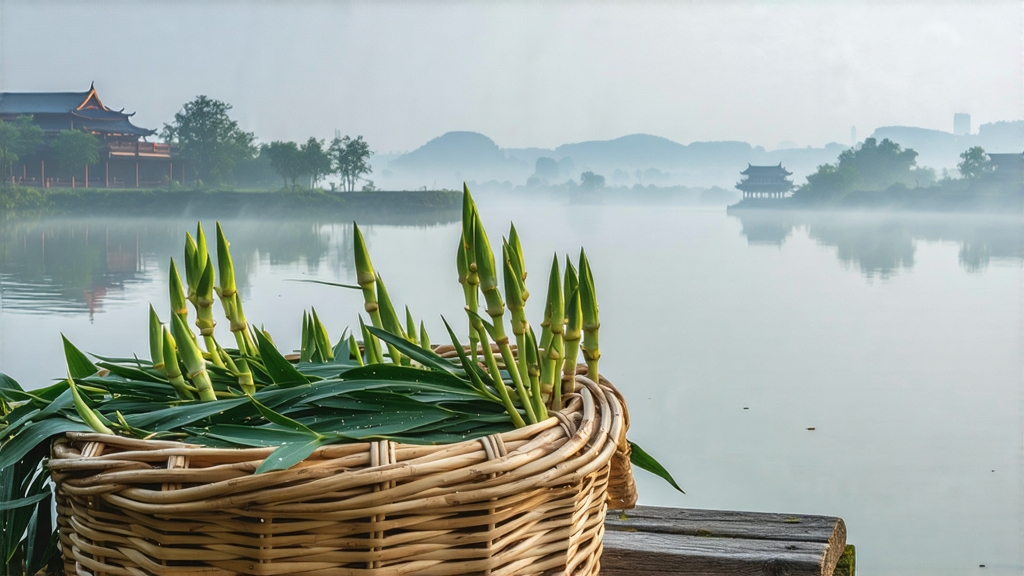
Biluochun, whose name translates literally to “Green Snail Spring,” is one of China’s ten most celebrated teas, yet it remains a delicate secret outside serious tea circles. Grown in the microclimate of Dongting Mountain, an island in Taihu Lake two hours west of Shanghai, the tea is so tiny and tender that a single kilogram contains roughly fourteen thousand buds, each picked before the Qingming festival when overnight temperatures still flirt with frost. Locals like to say the leaves are “spiced by fruit and kissed by lake mist,” because the bushes are interplanted with peach, plum, and apricot trees whose blossoms drop petals that bruise the leaf edges, adding a faint floral sweetness impossible to replicate elsewhere.
Historical records first mention the tea during the late Tang dynasty (around 900 CE), but its modern fame began in 1699 when the Kangxi Emperor visited the region. Court chroniclers describe how the emperor was served a pale liquor so aromatic that he asked its name; told it was originally called “Xia Sha Ren Xiang” (“scary fragrance”) because its perfume startled villagers, the refined monarch rechristened it Biluochun for the tight spiral shape resembling a snail shell and the fact that it was harvested in early spring. From that moment the tea became tribute grade, traveling north by canal and courier to Beijing’s Forbidden City packed in sealed bamboo tubes lined with lotus leaves.
Although all Biluochun comes from Dongting, two distinct styles exist today. The original “Wild Mountain” version is picked from seed-propagated bushes growing between 200 and 300 meters on rocky outcrops; these plants are never irrigated, relying only on fog and groundwater, yielding a mere 300 kg per hectare. Leaves are so small they resemble green commas, and the infusion carries a pronounced magnolia note. The second style, “Garden Cultivar,” was developed in the 1970s to meet rising demand; bushes are cloned from high-yield cultivars, planted in terraced orchards, and lightly fertilized, producing three times more leaf. Garden tea steeps a brighter jade color with a cleaner, slightly nutty cup, but lacks the lingering mineral finish that makes wild mountain lots coveted by collectors.
Crafting Biluochun is a race against time and oxidation. Picking starts at dawn when dew weight keeps the buds pliable; only the top standard—“one bud with an unfolding leaf the size of a sparrow’s tongue”—is accepted. Leaves arrive at the village workshop by 9 a.m. and are immediately spread on bamboo trays for two hours of withering, during which 15 percent of moisture evaporates and grassy volatiles disperse. The critical kill-green step employs a duck-egg-shaped wok heated to 180 °C; a master fryer tosses 250 g of leaves in rhythmic arcs for precisely three minutes, using only the ball of the hand to press and roll the bud around the wok’s inner wall. Temperature is then dropped to 70 °C and the same leaves are rolled for forty minutes, during which polyphenols oxidize just enough to soften astringency while amino acids concentrate, creating the tea’s hallmark umami sweetness. Finally, a gentle charcoal bake at 50 °C for twenty minutes reduces residual moisture to 5 percent, locking in the spiral shape and a downy silver coat that glints under light.
Because the leaf is so delicate, water that is even slightly too hot will cook the buds, turning liquor bitter. The classic Jiangnan gaiwan method calls for 4 g of tea in a 120 ml porcelain bowl, water at 75 °C, and an initial five-second rinse that is discarded to awaken the aromatics. The first formal infusion lasts ten seconds and produces a pale champagne-colored liquor with a rising perfume of white peach skin. Subsequent steeps add five seconds each; a quality lot will deliver six infusions before the spiral fully unfurls and the cup fades to sweet water. Western drinkers without a gaiwan can replicate the experience using a glass teapot and 70 °C water, infusing one gram of leaf per 100 ml for forty-five seconds, but the glass must be pre-warmed to prevent thermal shock that flattens fragrance.
Professional tasting follows a three-sip protocol. The first sip is aspirated loudly across the tongue to atomize the liquor, allowing volatile lactones to reach the retronasal passage; judges look for an immediate “ringing” floral note that lingers at the back of the throat. The second sip is held for three seconds to assess body